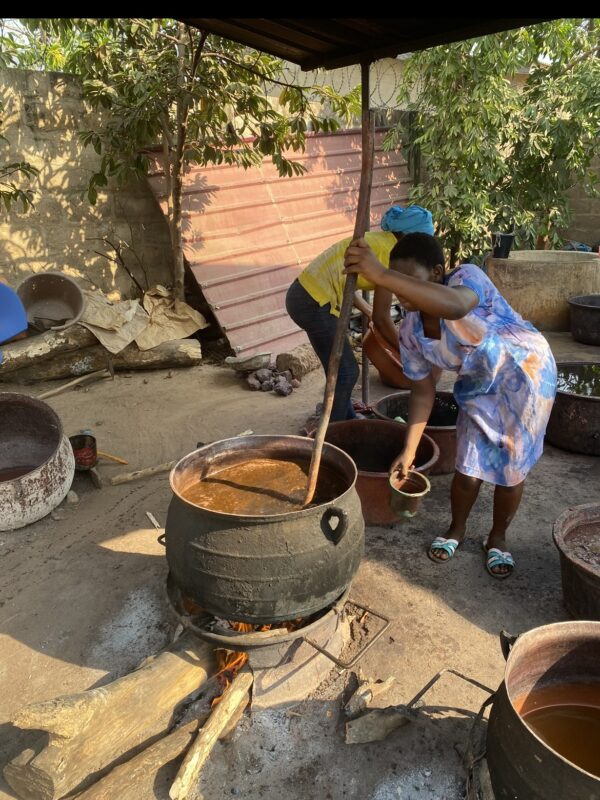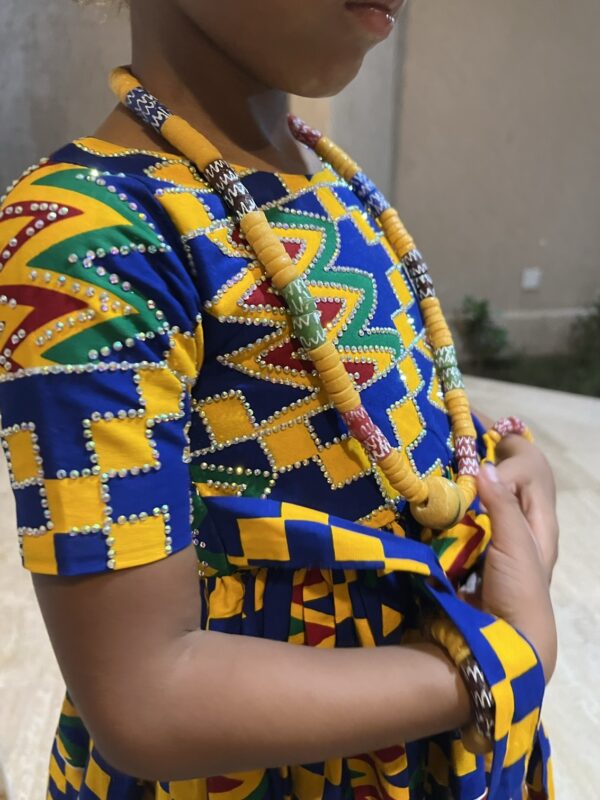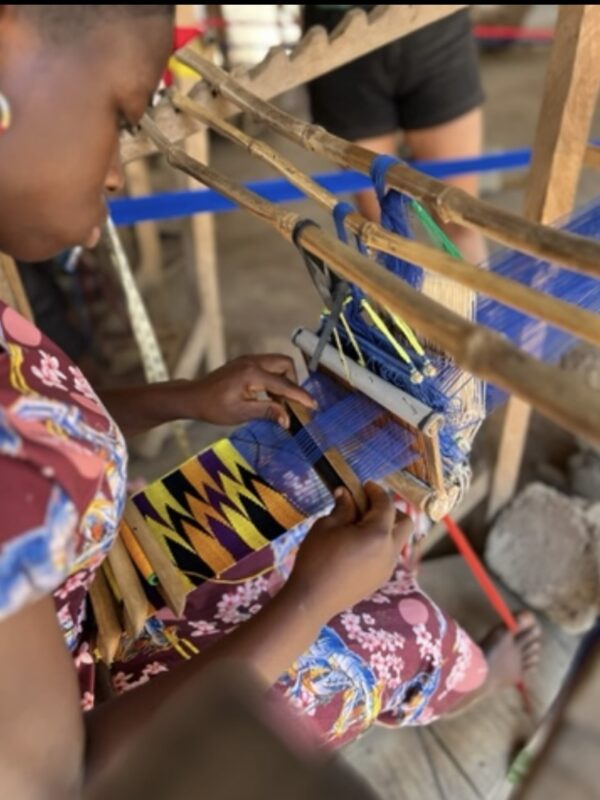The history of Wax prints (often referred to as African prints) is a journey through time and culture, where textiles and tradition come together. From the early colonial period to today’s fashion industry, these fabrics carry a deeply rooted history in the materials.
Side note: In the Netherlands, we often call them African prints, but they are actually known as Wax prints. African prints more accurately describe fabrics like Bogolan from Mali, woven fabrics, and batik fabrics developed and produced in various African countries. The vibrant and colorful fabrics we use are often not made in Africa but are produced in China, the Netherlands, and occasionally in Ivory Coast. All these fabrics are sold in large quantities at local markets and this play a significant role in many African countries. Okay, now you can continue reading ?

The Origin
Colonists sourced the fabrics that would later become a crucial part of Wax prints from Indonesia (batik fabric). During the colonial period, European colonists brought fabrics to Africa, particularly cotton and silk, imported from regions like Indonesia. These imported fabrics served as the foundation for the subsequent development of Wax prints.
International Influence
With the rise of the Nana Benz, influential businesswomen in Togo, Wax prints also gained international recognition. These women traveled the world, selecting the latest trends and designs and bringing them back to West Africa. This not only gave the prints local but also global influence. Chris’s grandmother was also a Nana Benz, and as a result, these fabrics continue to play a significant role in his (our) family. I’ll share more about these remarkable women next time…

From ceremonial occasions to daily use
Wax prints have played (and continue to play) a central role in the lives of many people. What sets these fabrics apart are not only the vibrant colors but also the symbolic meanings that wearers have attributed to the patterns over the years. Each fabric has been assigned a story, often inspired by the patterns. For instance, you might have a fabric called “Happy Family” and another named “Tomate Rouge.” Here in Togo, during a celebration, people often wear a specific fabric, creating not a Dress code but a Fabric code, haha.
Contemporary Fashion
Today, Wax prints are an integral part of contemporary fashion. Designers worldwide draw inspiration from the colors and patterns.
In an encouraging turn of history, we also see a growing number of local initiatives emerging where African prints are produced locally. This is becoming a new chapter in the history of African fashion! Fabrics handmade in Togo (batik) are increasingly featured on my Instagram. Unfortunately, the fabrics I’ve discovered are not sturdy enough for bags, but they are beautiful for clothing, etc. And we never know what i will find in this amazing creative country.

African Bags
The reason we don’t call it African fabrics is now clear, but it’s definitely an African bag. The bags are entirely handmade in Togo, and all materials are locally sourced.
You can stay updated on our latest collection and upcoming fabrics by following @woodandcricket. You’ll also get a behind-the-scenes look at how the collection is crafted in Togo. We’d love for you to take a look and follow us!


